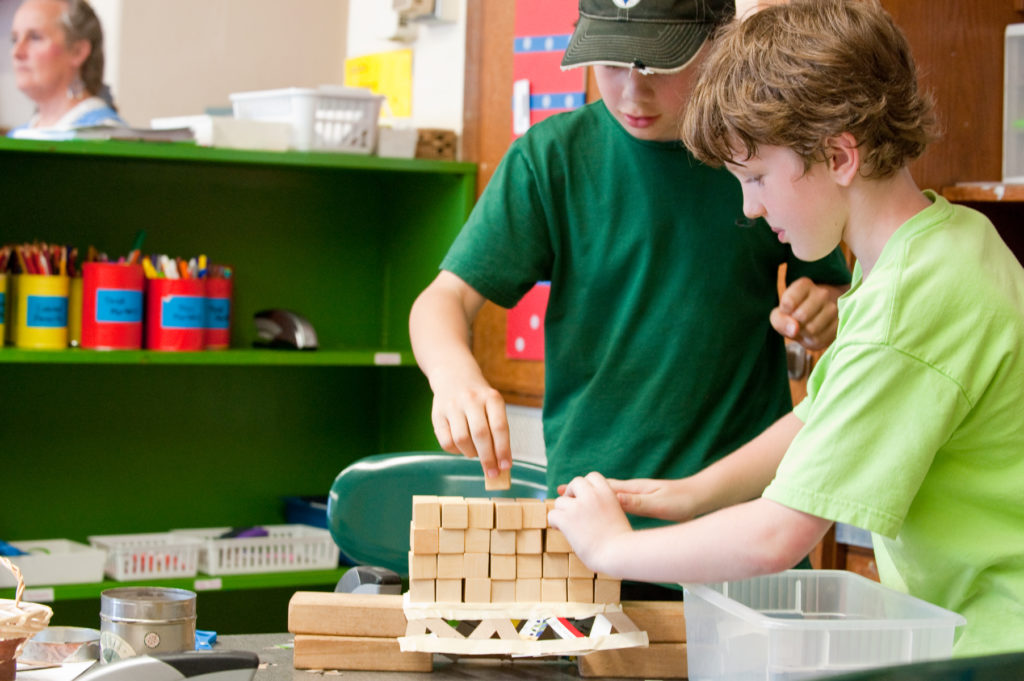

How things have changed since the beginning of the year! As I got to know this group of third graders in September, I knew I would enjoy working with each child. Individually, each seemed eager to learn, willing to try, and full of interests and ideas. However, as a group, that eagerness and energy translated into a class that was unusually hard to manage. They struggled with partner and group work, argued with each other over trivial things, and had a difficult time making transitions.
Growing more and more frustrated, I began cutting lessons short, limiting options, and reducing the degree of challenge in assignments. I decided not to do activities that would ordinarily be part of my teaching repertoire. “This class can’t handle that,” became my mindset.
But I soon realized that something was wrong. After a couple months together, the class was still struggling with basic routines and didn’t feel like a community. School days were feeling like drudgery—we were not having any fun. The approach I’d been trying—sticking to simple activities and lowering my expectations—was clearly not working. What would happen, I wondered, if I gave them more challenges? Would that engage their energy and attention and get them working together as a group? Could I use challenges to bring more joy to our classroom?
I thought about the energizers I hadn’t taught them—the silly ones I’d thought they couldn’t handle—and decided to risk it. I would teach them a really silly one: “My Name is Joe” (The Button Factory), but I would set it up as a challenge.
“We are going to learn a new energizer where we will be moving all sorts of body parts,” I said, “but we have to be able to each stay in our own place while doing it! How will you meet that challenge?”
My students looked intrigued and excited. They had many ideas, and we practiced several of the strategies they suggested. To my amazement, students who normally couldn’t stand still and keep their hands to themselves did all of the movements safely without touching anyone else. By the time we were finished, some of them were doubled over with laughter—but they all managed to maintain their self-control.
Afterward, as I listened to the children talking with each other about how much fun they’d had, two things were clear: first, the activity was fun for them because it was silly; and second, it was fun because it wasn’t easy, but they did it. “Aha!” I thought. They knew the activity would be hard, they came up with ideas together, we practiced them together, and they met the challenge successfully.
I began using a similar challenge-based approach at other times of the day, such as at clean-up times. For the most part, this class excels at putting materials away—except for pencils. For some reason, pencils were in book boxes, in library baskets, underneath tables, but rarely where they belong. So one day, in a humorous way, I asked if they could meet the “find-the-pencils” challenge. They were ready and eager. It became both a game and a challenge to find our pencils and put them back where they belonged.
Since I’ve begun offering this class more challenges, we’ve still had rough days and tricky moments. But overall my students are happier and more engaged, I’m less frustrated, and we’ve become a classroom community that has fun in lots of ways—whether by staying in control while doing silly energizers, spending extra time on academic topics that interest them, or meeting challenges together. My new mindset is: “What else can this class handle?”
Get more tips for teaching and using energizers in Susan Roser’s book, Energizers! 88 Quick Movement Activities That Refresh and Refocus.
Suzy Ghosh is a second grade teacher at Bush Hill Elementary school in Fairfax County, Virginia, and is also a Responsive Classroom consulting teacher.